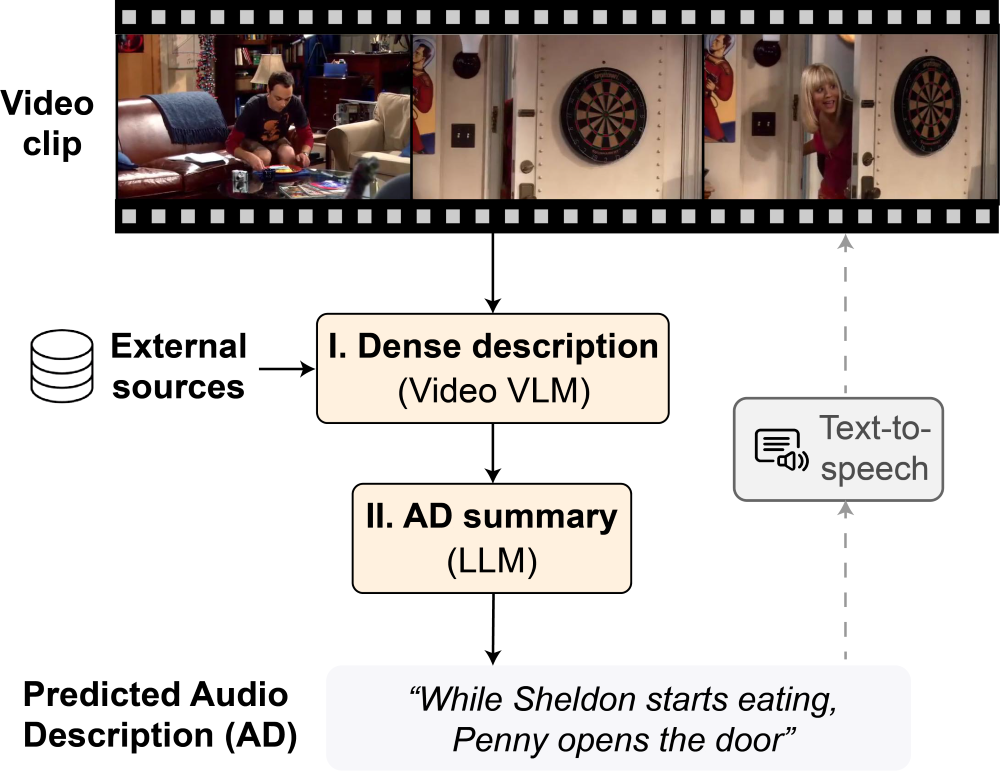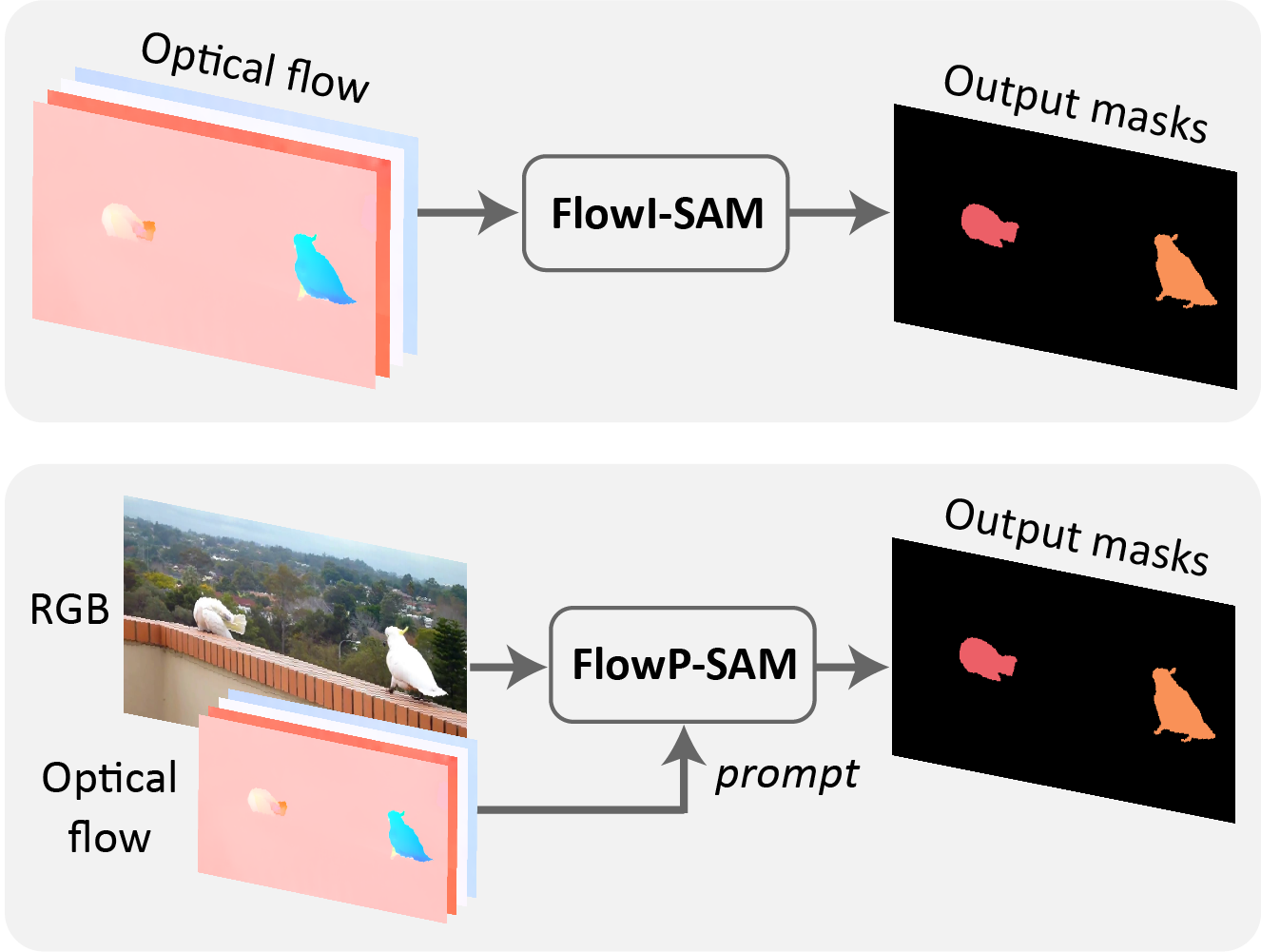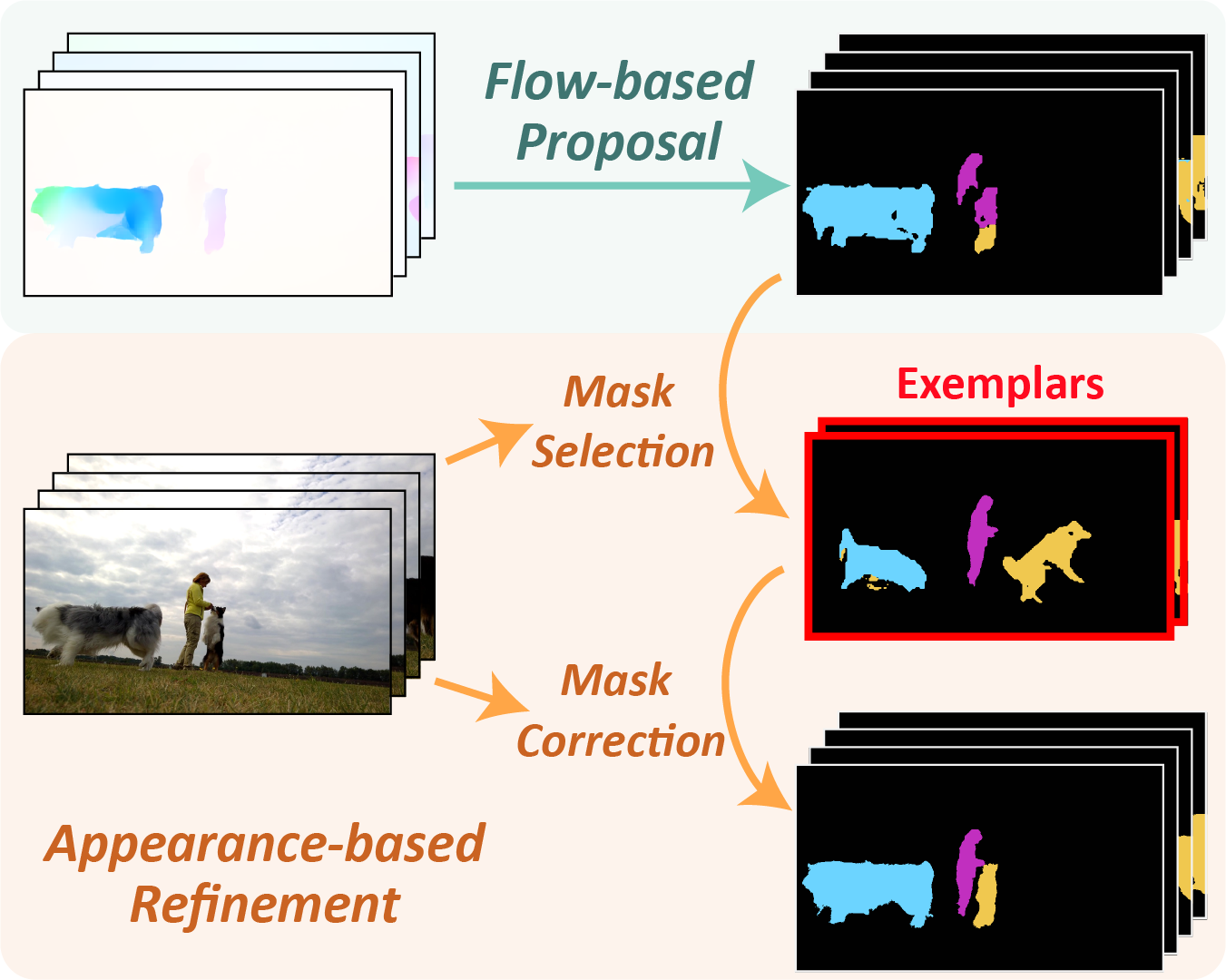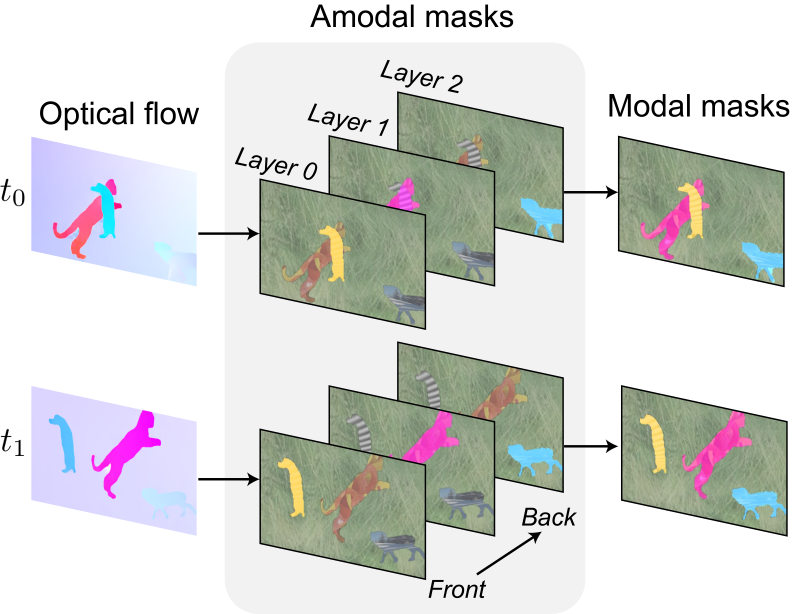|
I am currently a fourth-year DPhil student at Visual Geometry Group (VGG), University of Oxford, advised by Prof. Andrew Zisserman and Prof. Weidi Xie. Prior to that, I completed my undergraduate studies at University of Cambridge and received MSc and BA degrees in Natural Sciences (Physics), during which I did summer interns on machine learning and physics at Caltech, Fudan University, and University of Cambridge. |

|
|
My research focuses on long-form video understanding, object-centric learning, and motion segmentation. I am also interested in representation learning, image and video generation, and multimodal language model. |

|
Junyu Xie , Tengda Han, Max Bain, Arsha Nagrani, Eshika Khandelwal, Gül Varol, Weidi Xie, Andrew Zisserman In ICCV, 2025 (new) ArXiv / Bibtex / Project page / Code / Metric (Action Score) In this work, we introduce an enhanced two-stage training-free framework for Audio Description (AD) generation. We consider "shot" as the fundamental unit in movie and TV series, incorporating shot-based temporal context and film grammar information into VideoLLM perception. Additionally, we formulate a new metric (Action Score) that assesses whether the predicted ADs captures the correct action information. |

|
Junyu Xie , Tengda Han, Max Bain, Arsha Nagrani, Gül Varol, Weidi Xie, Andrew Zisserman In ACCV, 2024 ArXiv / Bibtex / Project page / Code / Dataset (TV-AD) In this paper, we propose AutoAD-Zero, which is a training-free framework aiming at zero-shot Audio Description (AD) generation for movies and TV series. The overall framework feature two stages (dense description + AD summary), with the character information injected by visual-textual prompting. |

|
Junyu Xie , Charig Yang, Weidi Xie, Andrew Zisserman In ACCV, 2024 (Oral) ArXiv / Bibtex / Project page / Code This paper focuses on motion segmentation by incorporating optical flow into the Segment Anything model (SAM), applying flow information as direct inputs (FlowISAM) or prompts (FlowPSAM). |

|
Junyu Xie , Weidi Xie, Andrew Zisserman In ECCV, 2024 ArXiv / Bibtex / Project page This paper aims at improving flow-only motion segmentation (e.g. OCLR predictions) by leveraging appearance information across video frames. A selection-correction pipeline is developed, along with a test-time model adaptation scheme that further alleviates the Sim2Real disparity. |
|
|
Minghao Chen, Junyu Xie, Iro Laina, Andrea Vedaldi In CVPR , 2024 ArXiv / Bibtex / Project page / Code / Demo This paper present a method, named SHAP-EDITOR, aiming at fast 3D editing (within one second). To acheve this, we propose to learn a universal editing function that can be applied to different objects in a feed-forward manner. |

|
Junyu Xie , Weidi Xie, Andrew Zisserman In NeurIPS, 2022 ArXiv / Bibtex / Project page / Code In this paper, we propose the OCLR model for discovering, tracking and segmenting multiple moving objects in a video without relying on human annotations. This object-centric segmentation model utilises depth-ordered layered representations and is trained following a Sim2Real procedure. |
|
This website template is originally designed by Jon Barron. |